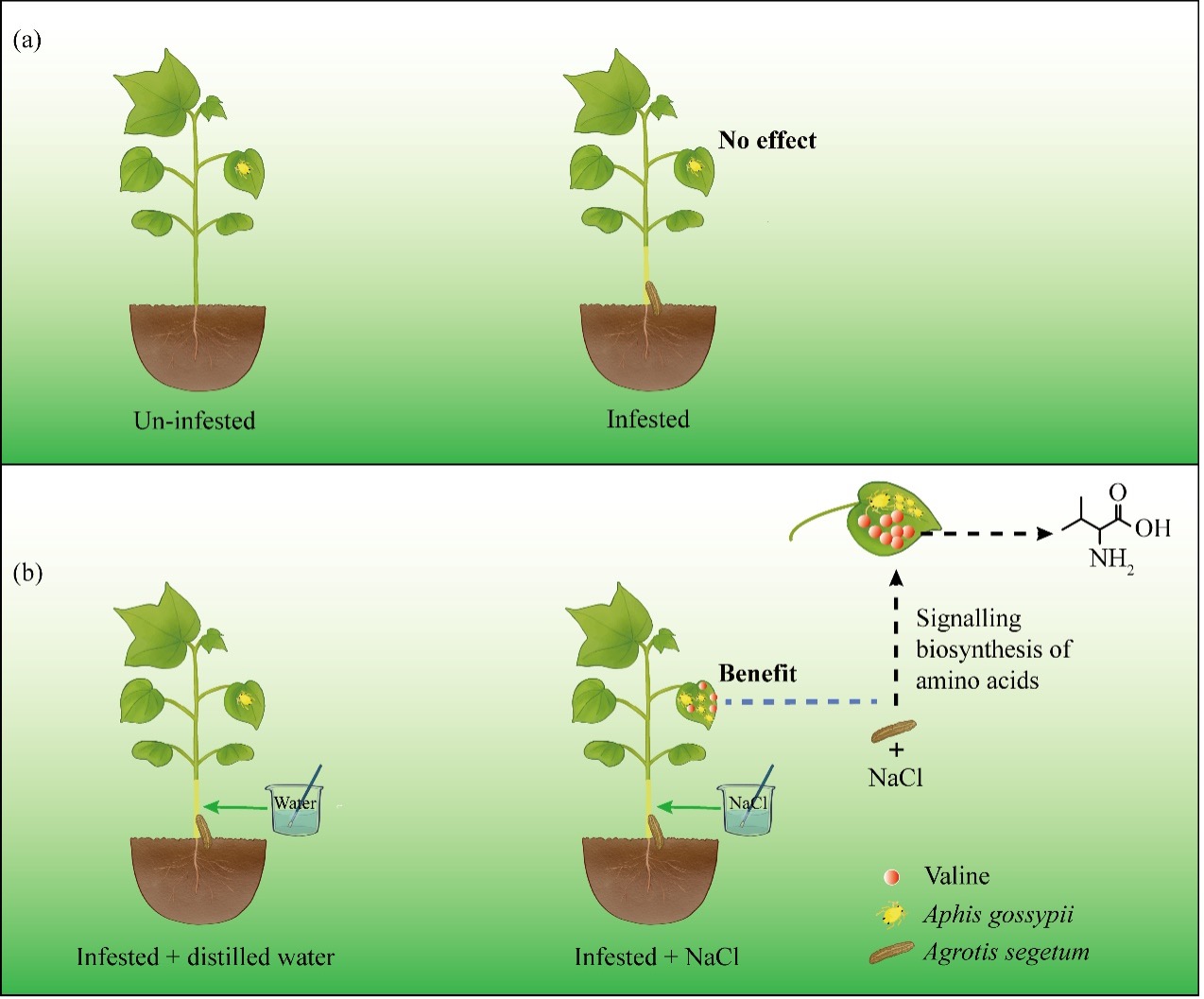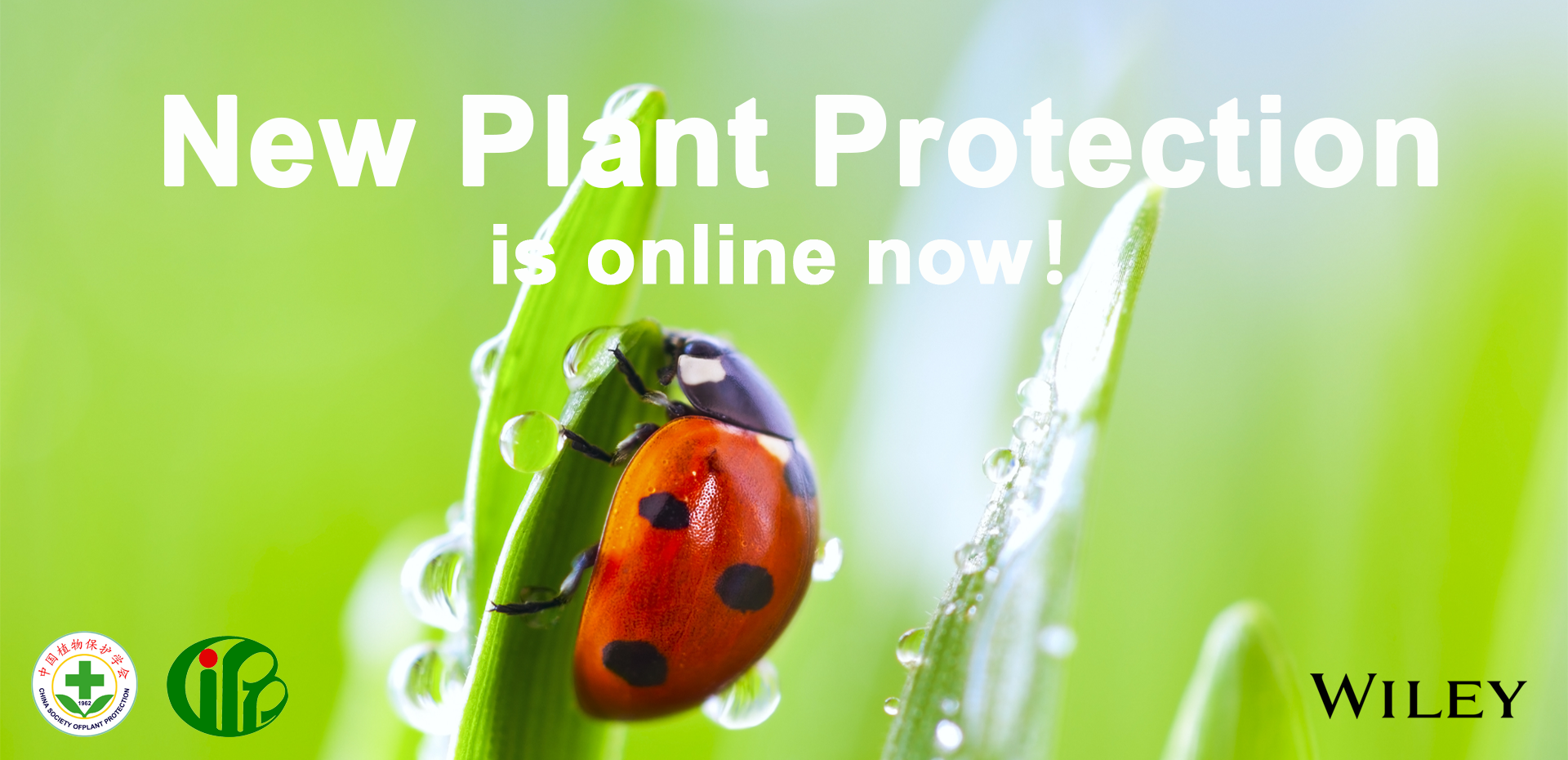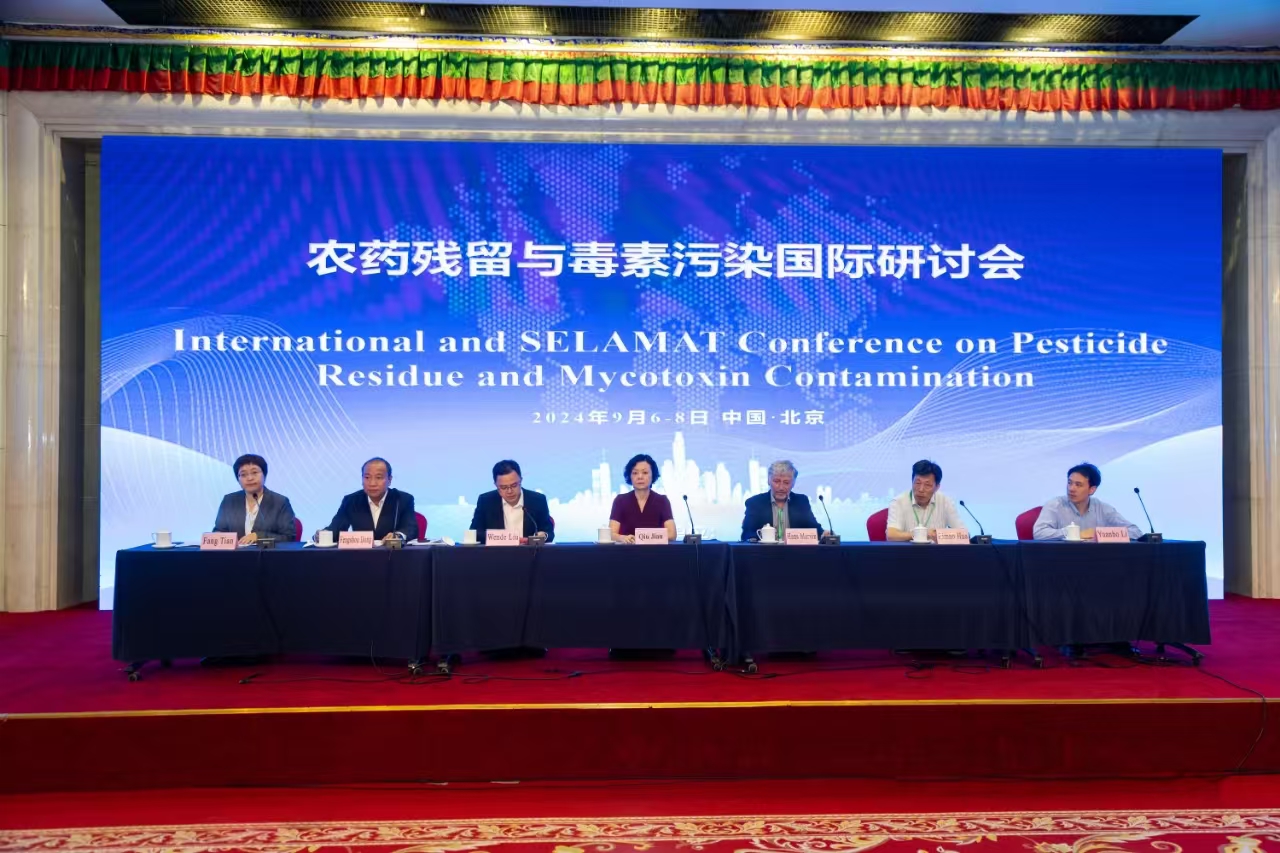IPPCAAS scientists revealed the effect of abiotic stress on the plant-mediated interactions between above- and below-ground herbivores
The Innovative Team for monitoring and control of cash crop pests at the Institute of Plant Protection, Chinese Academy of Agricultural Sciences (IPPCAAS), recently published a research paper titled "Salinity stress alters plant-mediated interactions between above- and below-ground herbivores" in the journal Science of the Total Environment. This study reveals salinity stress can alter interactions between the above-ground sap-feeding aphid and below-ground root-chewing feeder on cotton plant.
Turnip moth (Agrotis segetum) and cotton aphid (Aphis gossypii) are important herbivores of cotton in Xinjiang. Cotton aphids often occur with A. segetum larvae on cotton and are routinely found on the same plant. However, it remains unknown whether infestation of A. segetum larvae have any impact on A. gossypii. Soil salinization is severe in Xinjiang, during root or stem feeding, A. segetum larvae usually introduce salt from the soil into the plant wounds. It is also unclear how the abiotic stress affects the interactions between A. segetum and A. gossypii.
In this study, the authors determined A. gossypii fitness on un-infested and A. segetum-infested cotton plants, and further examined the performance of A. gossypii on A. segetum-infested cotton plants in the presence or absence of salinity stress. They also deciphered the molecular and biochemical mechanisms of the underlying plant stress response, assessed the extent to which different plant metabolites affect aphid performance. The results showed that concurrent A. segetum root feeding and salinity stress favor the development of A. gossypii through an accumulation of amino acids (i.e. valine) in cotton leaves, while these phenomena are absent when cotton plants are subject to root herbivory in the absence of salt stress. Their work provides scientific basis for further analysis of population status succession rules of cotton insect pests in Xinjiang and innovative development of green prevention and control strategies of cotton pests.
This research was financially supported by the National Key Research and Development Program of China (2022YFD1400300) and Agriculture Research System of China of MOF and MARA (CARS-15-19).
More details can be found at the link below:
https://doi.org/10.1016/j.scitotenv.2024.173687

-
 China-Laos Training Workshop on Integrated Management of Destructive Crop Pests and Diseases Successfully held in Laos
China-Laos Training Workshop on Integrated Management of Destructive Crop Pests and Diseases Successfully held in Laos -
 New Plant Protection: New challenge and new opportunity for plant protection
New Plant Protection: New challenge and new opportunity for plant protection -
 International and SELAMAT Conference on Pesticide Residue and Mycotoxin Contamination Held in Beijing
International and SELAMAT Conference on Pesticide Residue and Mycotoxin Contamination Held in Beijing -
 CAAS President Meets Chairman of ASEAN FAW Taskforce
CAAS President Meets Chairman of ASEAN FAW Taskforce
